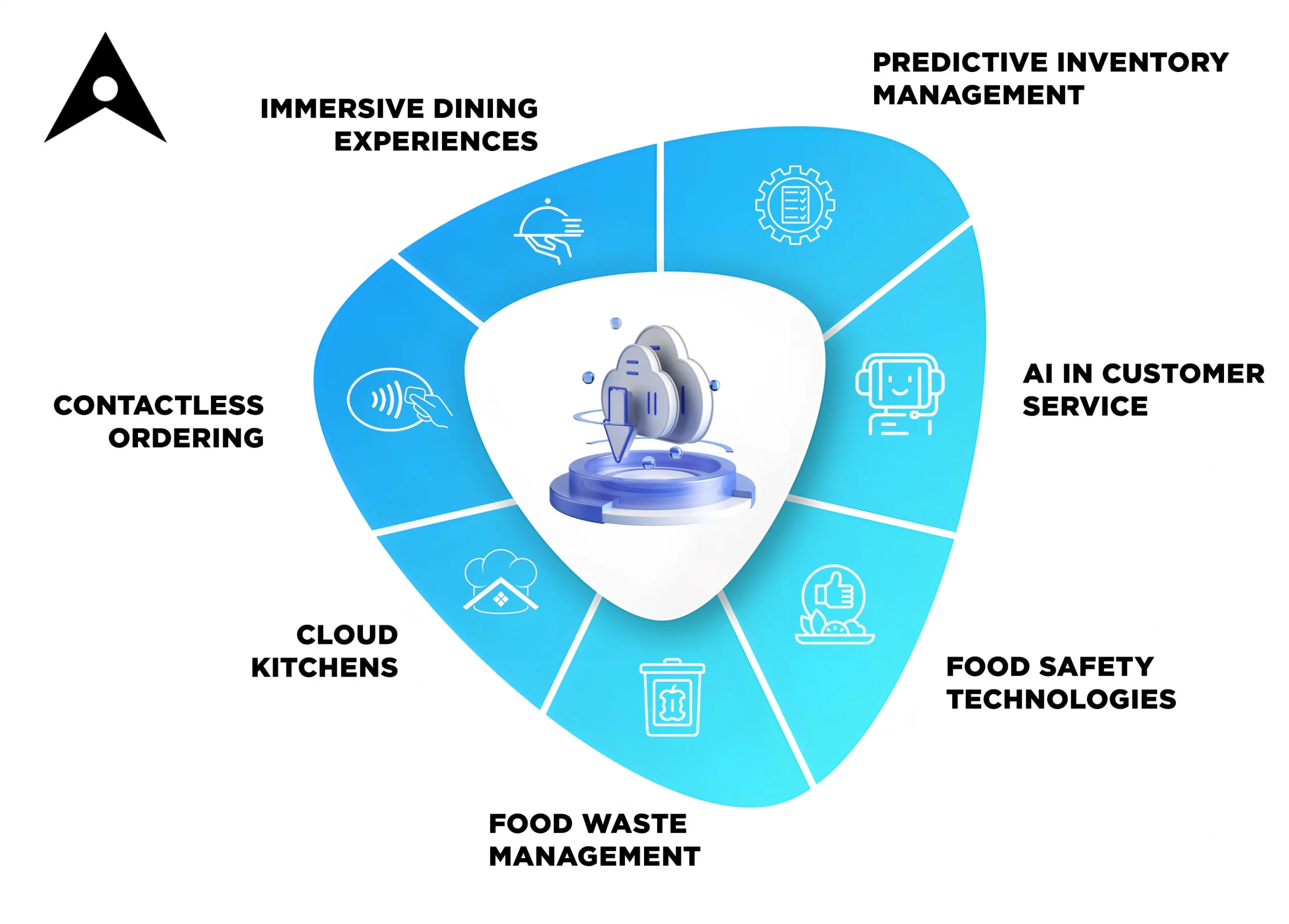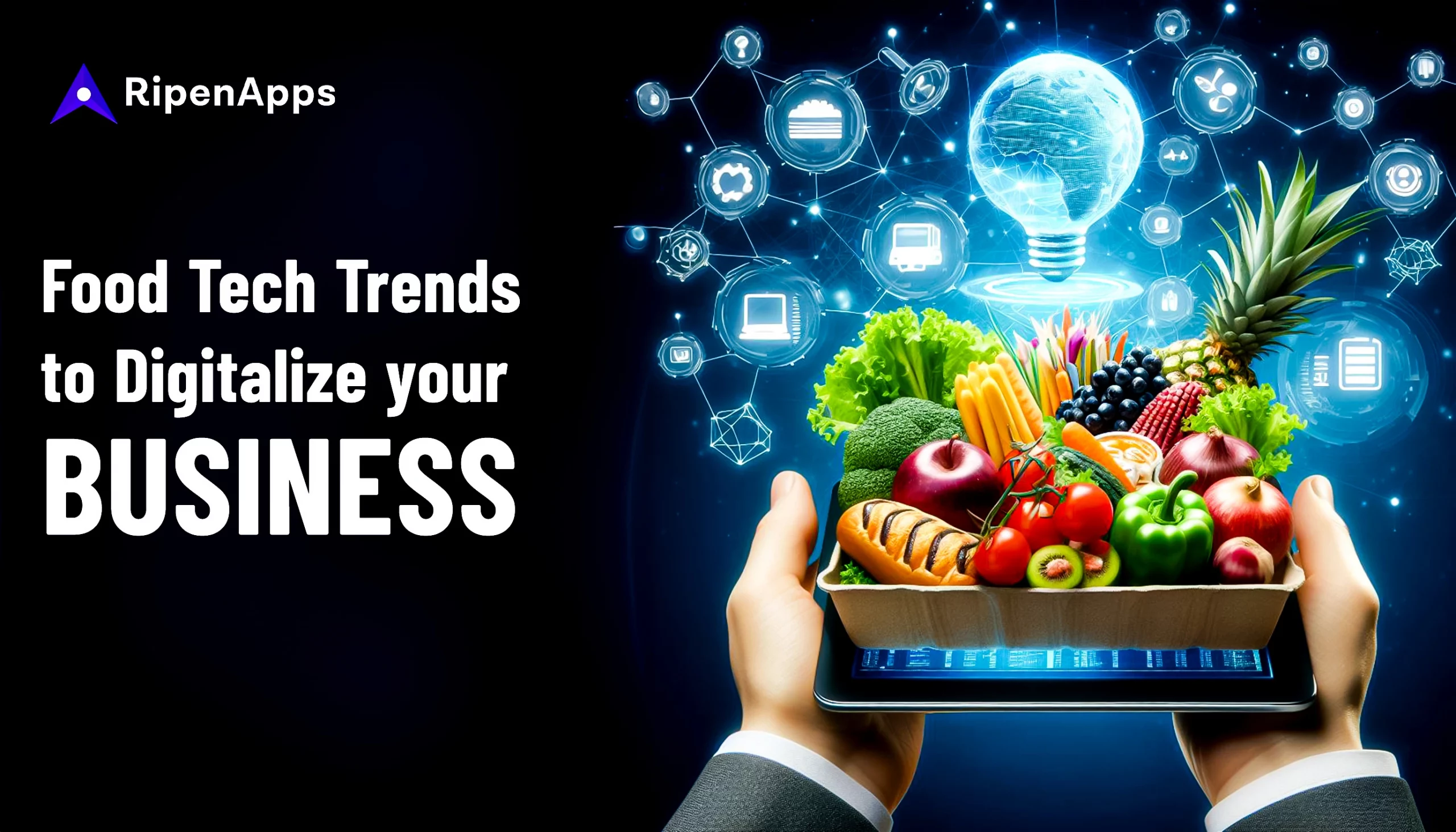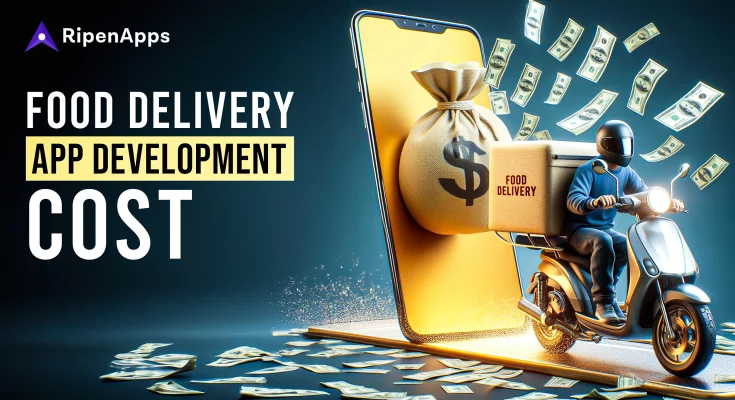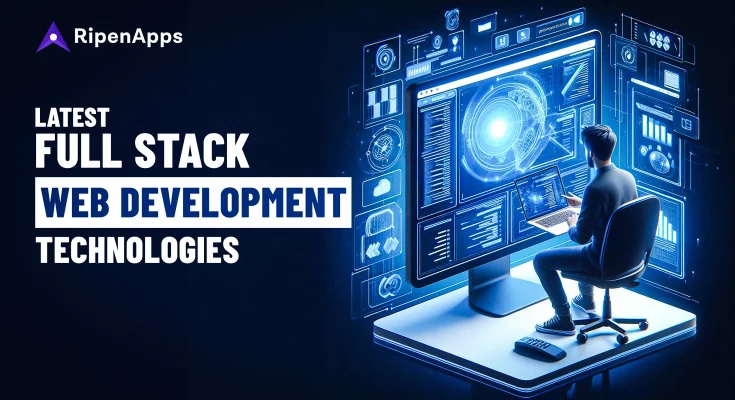Contactless payments have increased by 15% in the last 3–5 years. This is one of the statistics highlighting the growing demand for innovative solutions in the food industry. And, if you have a food business and are planning for a solid digital transformation strategy, you must be wondering about the current trends that are loved by consumers.
In this guide, we’ll walk you through some key food tech trends that can ensure a sustainable digital transformation strategy. From cloud kitchens to immersive dining experiences, we will help you understand all these trends. Let’s take a deep dive into the same.
Table of Contents
Current Tech Trends To Deploy In Your Business

We will start with the current tech trends that you can explore with your digital transformation strategy. Integrating these trends into your business can ensure a successful digital transformation.
Contactless Ordering
Contactless ordering has revolutionized how customers interact with restaurants, offering a convenient and efficient way to place orders without the need for traditional face-to-face interactions. By introducing mobile apps and kiosk-based systems, as a business, you can simplify your ordering process, providing customers with a seamless experience from start to finish.
You have to partner with app developers for startups if you are planning to start a business from scratch. Additionally, some key aspects of contactless ordering include:
- Simplification of the ordering process: Mobile apps and kiosks streamline ordering, making it quick and easy.
- Improved accuracy: With fewer chances of miscommunication, orders are more accurate, leading to higher customer satisfaction.
- Catering to customer preferences: Many people prefer minimal contact, especially in today’s environment, making contactless ordering a preferred option.
- Keeping up with industry trends: Embracing contactless ordering technology helps businesses stay competitive and meet evolving customer expectations.
Cloud Kitchens
Cloud kitchen apps like Blue Apron have emerged as an attention-seeking force in the food industry, offering a new approach to food delivery and catering to the growing demand for convenience and efficiency. These virtual kitchens operate without traditional storefronts, focusing solely on preparing food for delivery or takeout.
You can add a cloud kitchen unit as a digital transformation strategy or start a new unit with a cloud kitchen model. Some key aspects of the trend include:
- Scalability: This model offers scalability, allowing businesses to expand rapidly without a heavy need for physical infrastructure.
- Opportunities with delivery platforms: When you partner your cloud kitchen models with delivery platforms like UberEats, DoorDash, and Grubhub, you can explore new opportunities and reach a wider customer base.
- Flexibility and cost-effectiveness: When you align with the cloud kitchen trend, you allow your business to adapt to changing market conditions and customer preferences. The global cloud kitchen model is forecasted to reach $112.53 million in market size by 2027. You can imagine the degree of future-proof ability of cloud kitchens.
Food Waste Management
Effective food waste management is gaining a good amount of attention in the food industry, driven by environmental concerns. You can build a digital strategy to manage the waste food in your restaurant. Or you can also plan a food waste management business as a startup.
Here are the key steps to consider in order to build a successful food waste management strategy:
- Problem identification: Restaurants generate a significant amount of food waste, contributing to environmental issues and financial losses. Understanding the scale of the problem is important so that you can find the solution efficiently.
- Leveraging technology for waste reduction: Inventory and analytics apps can help businesses track and manage their food inventory more efficiently, reducing waste and saving money in the process. Ensure that you take food app development services from a reliable partner to ensure a flawless digital solution.
- Learning from successful case studies: Many businesses have successfully implemented food waste reduction strategies. By studying these case studies, you can gain insights and inspiration for building your own waste management solution.
Food Safety Technologies
Large restaurant owners look forward to integrating food safety technologies into their businesses. You can also embed food safety solutions into your business model. Since, the applications work on cloud, we suggest you to hire cloud application development services provider having diverse experience.
Here are the key aspects associated with it:
- Tracking and training: Digital technology allows businesses to track food safety practices in real-time and provide training to staff members to ensure compliance with regulations and standards.
- Transparency for consumer confidence: Technologies such as blockchain enable businesses to provide transparent information about the origins of their food products, building trust and confidence among consumers.
- Maintaining brand status: Food safety is essential for protecting public health and maintaining the reputation of businesses in the food industry.
AI in Customer Service
Another modern food tech trend that you can incorporate into your digital transformation is building customer service chatbots to improve the engagement of your business.
Here are the key benefits that you unlock after partnering with an AI App development company to build AI-based customer solutions for your business:
- Personalisation: AI-driven chatbots can provide personalised recommendations and assistance to customers, enhancing their overall food dining and ordering experience.
- Data analysis for menu improvement: By analysing customer data, businesses can gain insights into customer preferences and trends, allowing them to optimise their menu offerings and meet customer demands.
- Driving Efficiency: Through AI-powered customer service solutions, your business can improve efficiency and drive sales, helping you build a loyal customer base.
Predictive Inventory Management
Inventory management has always been a real challenge for businesses in every industry. And the food industry is no different. However, you can consider this food tech trend in your digital transformation strategy.
Here are the key benefits that predictive inventory management brings for you:.
- Forecasting Demand: Predictive analytics tools can analyse historical sales data and other factors to forecast future demand, allowing businesses to anticipate inventory needs and avoid stockouts.
- Optimizing Inventory Levels: By accurately predicting demand, businesses can optimize their inventory levels and reduce excess inventory, leading to cost savings and improved efficiency.
- Reduced Costs: Predictive inventory management enables businesses to operate more efficiently, and thus efficiency brings reduced costs.
Immersive Dining Experiences
How can we avoid AR/VR-based technology while talking about food tech trends? Both technologies have been hot topics in the digital transformation strategy.
Here is what you can achieve with AR/AR based dining experience:
- Virtual-Themed Environments: Augmented reality (AR) and virtual reality (VR) technologies can create immersive dining experiences by transporting customers to virtual worlds or enhancing their physical surroundings with digital overlays.
- Unique Customer Experience: By incorporating AR/VR technology, businesses can create unique and memorable dining experiences for customers.
Futuristic Trends to Keep in Mind
Here are some futuristic trends that are currently in progress and will be popular in the coming future. They can be a part of your future digital transformation journey.
Robotic Chefs
Robotic chefs can automate repetitive tasks in the kitchen, such as chopping, stirring, and cooking, freeing up human chefs to focus on creativity and innovation. This future technology has the potential to revolutionize the food industry by increasing efficiency, reducing labour costs, and improving consistency and quality.
Delivery Robots
Delivery robots are autonomous vehicles designed to deliver food and other goods to customers’ doorsteps. However, to plan a successful strategy to start delivery robots in your business, you can build trust and confidence among consumers by showcasing success rates. Delivery speed, reduced costs, and a great customer experience are some of its benefits.
Ready To Digitally Transform your Food Business Through One or More Food Tech Trends?
It is clear that technology will continue to play an important role in shaping the future of food, offering new possibilities for innovation and transformation. And if you want to embrace the opportunities food tech trends bring, it is crucial to hire a digital transformation partner who has a solid experience in building digital solutions for the food industry.
FAQs
Q1. What are the food tech trends in 2024?
Current food tech trends in 2024 include contactless ordering, cloud kitchens, food waste management, food safety technologies and immersive dining experience using AR/VR technology.
Q2. What is the current trend in food?
Currently, food tech trends like Cloud kitchens, contactless ordering and AI based customer services are becoming popular. Every restaurant business can explore and integrate these current modern technologies to digitize their business.
Q3. What is the future of the food tech industry?
In the future Robotic Chefs and Delivery robots will start becoming popular. If you are an established enterprise in the food industry, preparing a digital transformation catering both can be beneficial in the future.
Q4. How does technology affect the food industry?
From transforming customer experience to maximizing profits, technology in the food industry is playing a pivotal role in the food industry. In the future, we will also see robotic chefs in restaurants and delivery robots in online food delivery platforms.
Q5. Is food technology good for the future?
Yes, the future of food technology is bright. Businesses are investing in digital transformation strategies to win a competitive advantage.











 India
India USA
USA Australia
Australia Canada
Canada UK
UK UAE
UAE